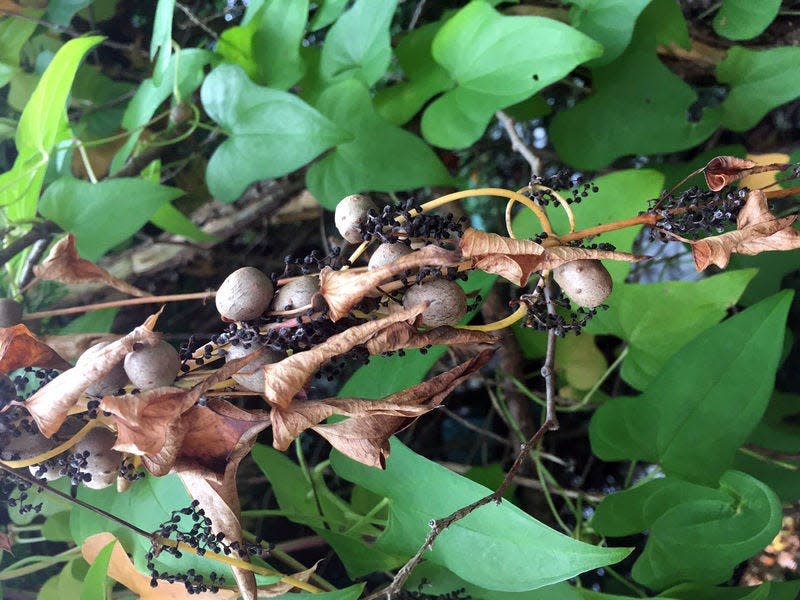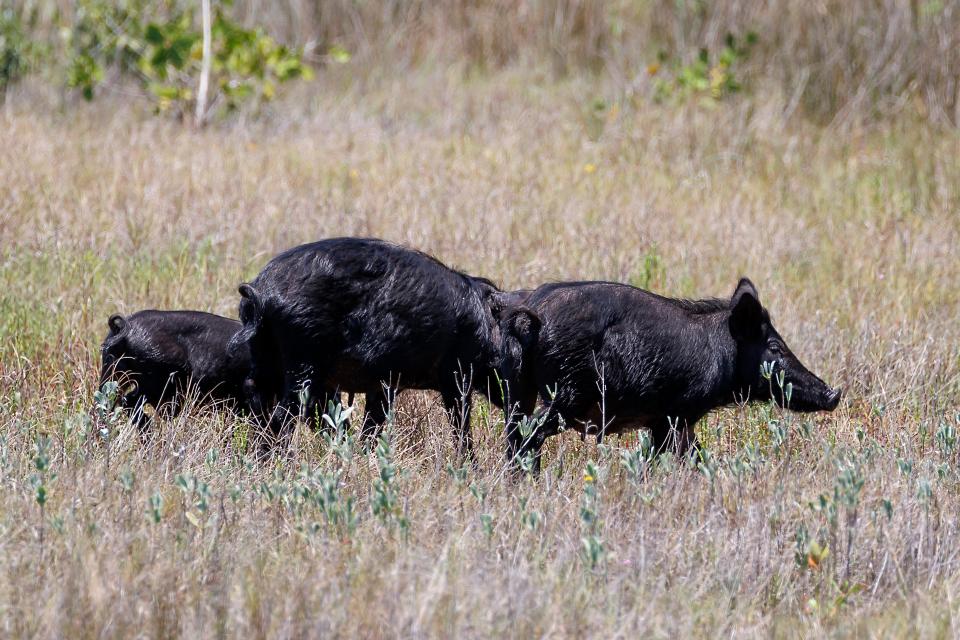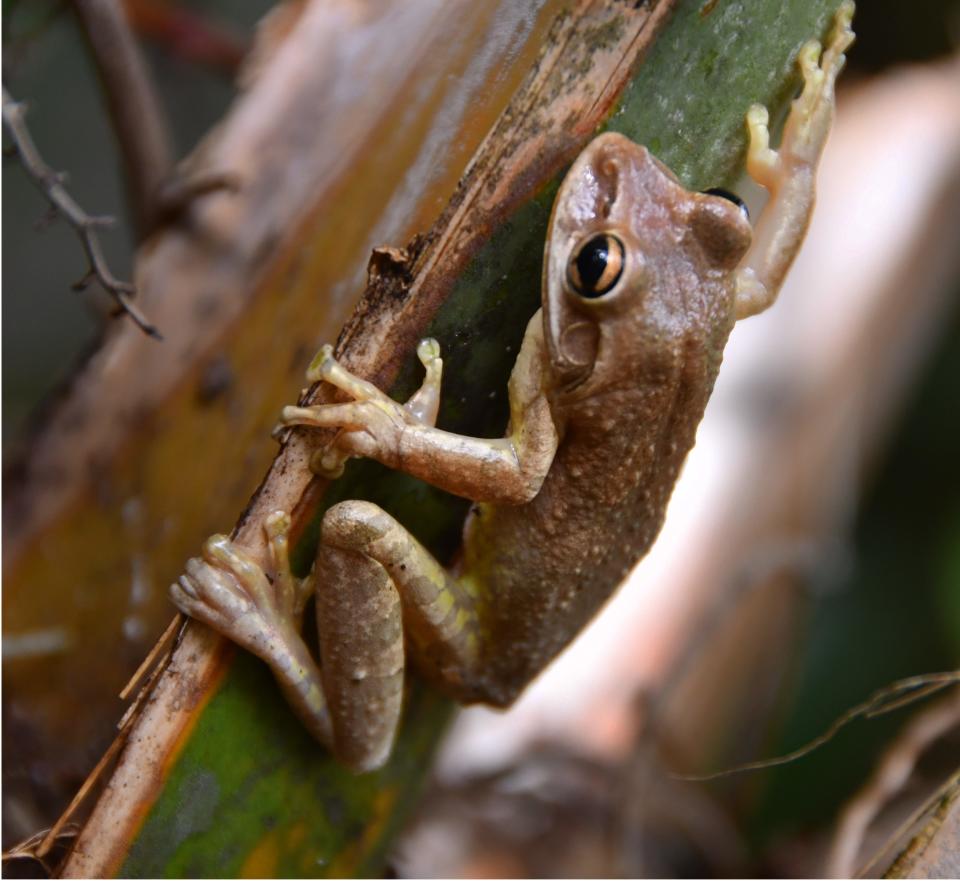Southwest Florida’s most wanted includes giant snails: Invasive species in your backyard
Southwest Florida's warm coastal waters and lush landscapes have attracted visitors and out-of-state transplants for decades. However, it might not just be humans seeking out the sun and sand of the Sunshine State.
More than 500 non-native plant and animal species have plagued Florida, with some of these animals wreaking havoc on delicate ecosystems within both Lee and Collier County.
These are 12 of the most destructive non-native animals (and plants) found in Southwest Florida:
Lee County's snail problem: Giant African Land Snail quarantine established in Lee County. What we know
Burmese pythons
The most well-known of Florida's invasive species, the Southeast Asian apex predator has quickly put a stranglehold on Florida's wildlife over the past four decades.
According to USGS, the Burmese python is now distributed across more than a thousand square miles of southern Florida, including all of Everglades National Park and areas to the north including Big Cypress National Preserve and Collier-Seminole State Forest.
Python hunt in August: Over 230 pythons taken from Florida Everglades in annual contest to fight the invasive species
Pythons invaded Florida back in the 1980s when snakes that were kept as pets were released or escaped and thrived in Florida's warm and predator-free conditions, feasting on native species. The Florida Fish and Wildlife Conservation Commission encourages the public to remove or report wild pythons when they're spotted.
Brazilian Peppertree
Almost looking like a permanent symbol of the holidays, the Brazil Peppertree is a medium-sized evergreen shrub-like tree that produces small berries that change from green to bright red as they ripen.
The FWC said they were first introduced during the 19th century and have invaded many habitats in Central and South Florida. This small shrub-like tree is the most widespread of Florida's non-native invasive plant species occupying more than 700,000 acres.
Brazilian pepper berries have been reported to produce a narcotic or toxic effect on native birds and wildlife during some parts of the year. They also produce dense closed-canopy forests that shade out almost all other plant life and are considered to be poor habitats for native wildlife species.
Cane toad
Cane toads, also called giant neotropical toads or marine toads, come from South America and are dangerous to animals because they secrete a toxic substance when bitten. Domestic pets are the most common victims of the toxin and can get seizures from it.
They eat anything and everything, including native frogs, insects and fish. Cane toads are also attracted to pet food.
Cane toads are not protected in Florida except by anti-cruelty laws and can be removed from private property and humanely killed year-round with landowner permission. Captured cane toads may not be relocated and released.
Australian Pinetree
Introduced to Florida during the 1890s, these pine trees hailing from Australia have spread like wildfire throughout the state ever since.
The FWC says because Australian pine trees are resistant to salt spray and can grow close to seawater, they have invaded thousands of acres of southeastern and southwestern coastal areas of Florida.
Iguanas
Green iguanas have been making their way north since they first appeared in the wild in South Florida in the early 1960s. These big, spiny lizards can damage structures when they dig burrows beneath foundations and cause chaos as they dash around.
For the most part, iguanas feed on plants, but they've been known to eat snails and bird eggs. Adults, which are not always green, can be more than 5 feet in length and weigh up to 17 pounds.
Air potato
For starters, it's not actually a potato. Native to Africa, the invasive yam plant can be found in nearly every county in Florida, including in Southwest Florida.
However, just because it's a yam doesn't mean you want to eat it. Both its underground tubers and aerial bulbils may contain a variety of toxic compounds. The University of Florida mentioned that in other parts of the world, there are cultivars grown as crops that you can eat, but they have a very bitter taste that is removed by boiling.

Feral hogs
Florida's feral hogs can trace their lineage back to the times of the Spanish conquistadors of the 16th century. Early European settlers brought livestock to the Americas, including pigs, and some escaped.

Feral hogs are prolific breeders and can maintain large populations even though they're a popular target for hunters. While the hogs mostly eat plants, their habit of rooting under the ground can cause considerable damage to native ecosystems.
They're dangerous to humans, too. Feral hogs can weigh several hundred pounds and are aggressive.
Tegu Lizards
Another large lizard species taking over the state, the South American tegu is known to burrow into turtle and alligator nests and eat the eggs inside.
While they're not known to be aggressive to people, tegus do pose a threat to native reptiles and ground-nesting birds. They can grow up to four feet long.
Residents are encouraged to report tegu sightings as officials continue to work to control the lizards' spread into Florida.
Giant African land snails
The giant African land snail is one of the most damaging snails in the world, consuming at least 500 different types of plants.
In December 2022, a detection of giant African land snails was confirmed in Lee County, prompting required increased survey and voluntary treatment in the area. The continued survey resulted in an increase in the number of snails found, dead and alive, requiring the department to enact the quarantine announced today.
These snails could be devastating to Florida agriculture and natural areas as they cause extensive damage to tropical and subtropical environments. The snails also pose a serious health risk to humans by carrying a parasite rat lungworm, known to cause meningitis in humans.
Water hyacinth
Despite being one of the prettiest plants in our waterways, it is also one of the most invasive. The water hyacinth was introduced as an ornamental plant and covered more than 120,000 acres of public lakes and rivers by the early 1960s.
The Conservancy of Southwest Florida said the water hyacinth can double in population size in about two weeks because of its quick reproduction and plant development. This fast growth rate leads to dense mat formation that clogs waterways and limits flood control and wildlife use.
Lionfish
The lionfish was first introduced to the waters of the western Atlantic Ocean when owners dumped them. Native to the Pacific Ocean, they were first spotted in the wild here in the 1980s and have spread through the Caribbean and into the Gulf of Mexico.
Lionfish are voracious eaters and mostly prey on smaller fish. They like to hunt around coral reefs and in seagrass beds. Because of their venomous spines, they have very few natural predators.
Lionfish are throwing off the balance in coral reefs off the coast of Florida and in the Caribbean as they feast on native fish populations.
Cuban tree frogs

Theorized to have been brought to Florida in the 1920s as hitchhikers on cargo ships, Cuban tree frogs have become a major pest in Southwest Florida.
They prey on Florida's much-smaller native tree frogs and small snakes, and their tadpoles compete with native tadpole species for space and resources.
This article originally appeared on Fort Myers News-Press: Burmese Pythons to Iguanas, what to know about SWFL's invasive species

